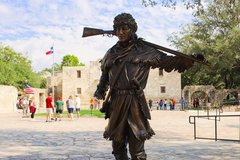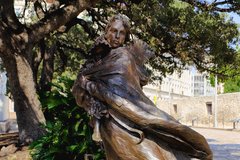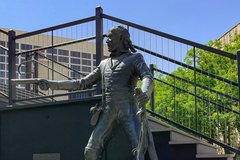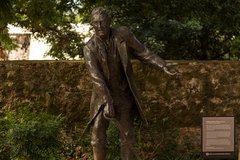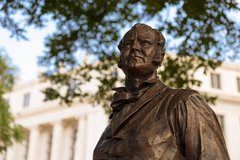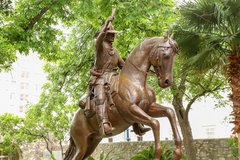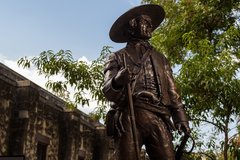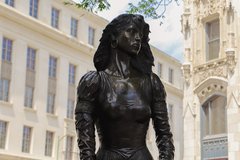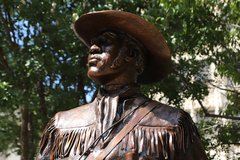As you enter Alamo Plaza, you are welcomed by legends with two beautiful sculpted bronze statues that convey the humanity and heroism of the story of the Alamo.
Alamo Plaza
18 Pounder Losoya House Exhibit
At the Southwest corner of the Alamo, you are welcomed by Alamo Defender, José Toribio Losoya at the location of his family's home.
Cavalry Courtyard
Walk among legends in Cavalry Courtyard where six additional beautiful sculpted bronze statues commemorate the historic past.
The Alamo installed these stunning bronze sculptures of historical figures from the Texas Revolution in our Cavalry Courtyard. Some statues are recognizable from their former locations at SeaWorld and the Henry B. Gonzalez Convention Center, while others were crafted specifically for the Alamo Sculpture Trail, following the footpath from the Briscoe Western Art Museum to the Alamo.

